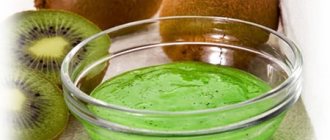To treat many skin diseases, dermatologists prescribe salt baths. To carry out the procedures, it is not necessary to go to a sanatorium or medical resort. You can relieve the acute condition of eczema, psoriasis or atopic dermatitis at home. In addition, salt baths are also recommended for healthy people who want to increase skin turgor, make it more moisturized and velvety, and get rid of cellulite and mild inflammatory manifestations.
Read on to find out how salt baths work to clear your skin, which salt is best to use, and what medical experts recommend.
| Timofey Karmatskikh Graduate of the Chelyabinsk State Medical Academy with a degree in neurology. Specialist of visceral practices of the highest category. | |
| Anna Mishchenko Graduate of Dnepropetrovsk State Medical Academy Cosmetologist, beauty expert | |
| Svetlana Bazina Founder of cosmetics Cosmetologist and massage therapist with 25 years of experience Prize-winner of the cosmetologists competition “The Art of Beauty 2009” |
Basic facial skin care: advice from a cosmetologist
During the day, a lot of impurities accumulate on the surface of the skin, which may not be visible to the naked eye. Foundation, powder, and dust particles settle on the surface of the skin and clog pores. The skin glands secrete oil, which normally moisturizes the skin and regulates pH.
If the lipid balance of the skin is disturbed and skin care is not carried out competently every day, this can cause a number of problems:
- clogged pores
- inflammation and acne
- violation of breathing and skin nutrition
- decreased elasticity
- the appearance of wrinkles, etc.
Proper daily skin care consists of several stages. The cosmetologist selects the products taking into account age, skin type, the presence and intensity of defects.
Let's sum it up
- When treating skin diseases, complement therapeutic methods with a course of salt baths to cleanse the skin. Don't forget to consult your doctor.
- Use Epsom, sea or pink Himalayan salt - in separate courses, alternately within a course or as a single mixture.
- Choose certified food grade salt to avoid negative effects and get maximum benefits.
- The duration of the procedure is 20 minutes. The optimal temperature is 35–37 degrees; if you feel well, the water temperature can be increased to 40 degrees.
- The usual course of therapeutic salt baths consists of 12–15 procedures, which are carried out every other day.
- Take a holistic approach to skin health. Combine salt baths to cleanse the skin with salt compresses and masks. Eat right, avoid allergens.
For your first order using promo code BLOG, you get a 25% discount on all products from the article, enjoy
Why cleanse and tone your skin?
The main stages of skin care are cleansing and toning. They should be performed 2 times a day. Daily facial skin care at home depends on the condition of the skin.
Cleansing is an important stage of skincare procedures. Using makeup and cosmetics without first cleansing will be ineffective - the skin and pores are contaminated, which provokes the appearance of pimples and minor blemishes. Even if you don’t use decorative cosmetics, you still need to cleanse your skin.
Daily facial skin care at home cannot be complete without cleansing. During the night, the skin intensively produces sebum. Morning procedures will help remove excess sebum and prepare the skin for the use of day cream.
Proper daily facial skin care must include evening cleansing of dirt and makeup residues. After cleansing, the skin is able to absorb the nutrients contained in the creams. The main rule is to use special products to cleanse the thin skin around the eyes.
If everything is clear with cleansing, then why does the skin need toning? The normal pH of human skin is 3.5-5.5. The skin is covered by a lipid layer called the acid mantle. Washing disrupts the acidity of the skin, as products often contain alkalis. After some time, the skin itself is able to restore its pH, but a tonic will help speed up this process.
Facial skin care every day includes toning. Tonics perform several tasks:
- help neutralize the effects of cleansers
- stabilize skin pH after cleansing
- prepare the skin for applying the cream
- improve the penetration of nutrients into the deep layers of the dermis
Daily skin care for the face and neck means using toners in the morning and evening. The toner restores pH and eliminates the feeling of tightness. The toning effect will not be long in coming - the skin becomes moisturized and velvety, skin pores narrow, and inflammatory processes decrease.
Excess salt in the body
Interestingly, sea salt consists of 97% sodium chloride, and the remaining part (3%) consists of mineral compounds necessary for human life.
Sodium normalizes kidney function, maintains normal water-salt balance, neuromuscular activity, participates in muscle contraction, and transport of blood sugar into cells. Without this element, the growth of the body and the normal functioning of internal organs are impossible [9][10].
By interacting with chlorine, sodium prevents the leakage of fluid from blood vessels into nearby tissues. It is impossible to overestimate the role of this element for a living organism [9][10].
In a healthy person, the sodium content in the blood ranges from 135 to 145 millimoles per liter. A shift in this balance up or down indicates the presence of “hidden” problems in the body [9][10].
With prolonged excess salt consumption (over 10–15 grams per day), hypernatremia develops, accompanied by cellular dehydration [10].
Other causes of sodium accumulation in the body:
- diabetes mellitus type 2;
- hypertension;
- unhealthy diet (uncontrolled consumption of fast food, processed foods);
- hereditary predisposition;
- insufficient amount of water consumed (less than 1.5 liters per day);
- taking mineral preparations;
- violation of water-salt metabolism;
- dysfunction of the adrenal glands and kidneys [10].
Symptoms of excess:
- fluid retention in the body (edema);
- increased body temperature;
- excessive excitability;
- decreased kidney function;
- constant thirst;
- lethargy, loss of strength;
- constipation;
- joint pain;
- dark yellow urine;
- frequent headaches;
- muscle cramps;
- motor restlessness;
- arterial hypertension [10].
Consequences:
- muscle fibers are stretched, their function is weakened (response to impulses worsens);
- renal failure, nephritis, inflammation of the canals develops;
- the blood thickens, the pulse quickens, chronic hypertension appears;
- the risk of stroke and heart attack increases;
- arrhythmia and tachycardia develop;
- fatty deposits (plaques) appear on the walls of blood vessels;
- The regulatory function of the hypothalamus decreases [10].
To eliminate the symptoms of hypernatremia and improve the patient’s condition, the amount of salt consumed should be strictly controlled and reduced to a critical minimum of 3–5 grams per day. In addition, a strict diet, medication, and outpatient treatment are prescribed. The goal of therapy is enhanced elimination and blocking of salt deposition [10].
Remember, self-medication is dangerous to health. Therapy is prescribed by a doctor after drawing up a clinical picture of the patient’s health.
How to cleanse and tone the skin?
What do you need for daily facial skin care? Choose your products wisely and know the step-by-step care regimen!
Cleansing is a prerequisite for normal skin functioning. This is the main procedure before applying all nourishing creams. Scientists have proven that cleansed skin absorbs the nutritional components of cosmetics 30% better than contaminated skin.
Don't neglect cleansing in the morning. Even if the skin is visually clean, this does not mean that the skin is not contaminated. All night the cells worked actively, bringing toxins and sebum to the surface. You should get rid of them to awaken your skin.
The main rules for daily cleansing and toning:
- Cleansing is carried out in the morning and evening. The main stage of intensive cleansing should be in the evening, when the skin accumulates impurities during the day.
- To cleanse the skin, makeup is removed with special products - first from the eyes, then from the entire face. Decorative cosmetics are removed with makeup products - mousses, foams, gels. They are selected according to skin type. Mousses and foams are suitable for dry and normal skin, and gels for oily skin.
- All cleansers, without exception, must be washed off with water. Even light milk should not be left on the skin. The components included in cleansers gradually destroy the lipid membrane of the skin, reducing its protective abilities.
- After cleansing, the skin is toned with tonic, lotion or toner depending on the skin type. These products remove residual chlorinated water, soothe the skin, and stabilize the pH. Every day facial skin care should not include alcohol-based toners. They have an aggressive effect on the skin, and subsequently stimulate hypersecretion of the glands.
How to care for your skin depending on its type?
Oily and combination skin suffers from intense production of sebum. The skin has a characteristic oily sheen, which is especially noticeable in the area of the nose, forehead and chin.
Daily care for problem skin is based on the use of products with a mousse texture that are washed off with water. Such products do not disturb the balance of the skin. To care for problem skin, it is better not to use abrasive products - they aggressively cleanse the skin and injure the epidermis.
Every day care for problematic facial skin is based on the main rule - proper cleansing. You need to take care of your skin with gels and small scrubs. They eliminate impurities and dead particles of the epidermis, cleanse pores, and eliminate clogging of the sebaceous glands. Daily care for problem skin necessarily includes refreshing your face with tonic. Products should contain a lot of moisture, but not be too greasy.
Combination skin is characterized by a combination of two skin types. The so-called T-zone is distinguished by an oily sheen, often with inflammatory foci. There are dry areas in the cheek area. Combination skin becomes treacherously shiny in the summer heat, but dries out quickly in winter. What should be your daily facial skin care routine at home?
There is no need to use different products for different areas of the face! Today, cosmetics have been developed for mixed skin types. Daily facial skin care involves the use of soft toners and low-fat creams. Mattifying wipes can get rid of excess fat in the T-zone, and toner can normalize the pH of the skin.
Dry skin suffers from a lack of sebum and moisture. The skin looks thin, stretched and rough. Dry skin is prone to premature wrinkles. Products with an oily, rich texture will help restore comfort and beauty to your skin.
A cosmetologist's advice on caring for dry skin is based on hydration and nutrition. Daily care for dry skin at home involves the use of delicate products that have a mild moisturizing effect.
Daily care for dry skin should include soft milk, gentle tonics, and nourishing creams with herbal extracts. Such products will restore healthy radiance and beauty to the skin. Products containing irritating alcohol and abrasive particles should be excluded from daily care for dry skin.
Daily care for aging skin has its own characteristics. Often women aged 35+ experience loss of elasticity, the appearance of thin skin folds, dryness and sagging.
Daily facial skin care at 35 years old is based on replenishing the lack of collagen and elastin, stimulating cells to self-heal. Naturally, it will not be possible to stop the aging process. But they can be significantly slowed down. Daily skin care after 45 should consist of products containing hyaluronic acid and collagen. Anti-aging cosmetics will make the skin more elastic, tightened and nourished.
Shortage
Causes of hyponatremia:
- insufficient intake of salt from food (less than 0.5 grams);
- liver cirrhosis with ascites;
- polycystic kidney disease;
- pyelonephritis;
- decompensated diabetes mellitus;
- chronic renal failure;
- nephrotic syndrome;
- diseases of the digestive tract;
- taking diuretics;
- hypersecretion of antidiuretic hormone [9].
Symptoms of deficiency:
- decreased skin turgor;
- dry dermis;
- leg cramps;
- vomit;
- thirst;
- decreased urine output;
- nausea;
- confusion, hallucinations;
- loss of appetite;
- drowsiness and apathy;
- weight loss;
- muscle weakness;
- frequent infectious diseases
- decrease in blood pressure [9].
Consequences:
- depression;
- deterioration of food digestion;
- decrease in blood plasma volume;
- leaching salt from bones;
- increased accumulation of harmful nitrogen compounds that undermine health;
- dysfunction of the vestibular apparatus [9].
Treatment of hyponatremia involves the use of medications and foods containing sodium.
Food sources: sea salt, sauerkraut, brines, broths, soy sauce, canned meat, tomatoes, celery, eggs, fish and seafood.
What do you need for skin care every day?
The procedure for caring for facial skin changes every day as the body grows older:
- 20+. During this period, the withering processes begin and the first signs of skin maturity appear. Daily skin care after 25 years is based on the use of moisturizers and antioxidants. The skin is still elastic and actively regenerates. Therefore, daily skin care after 25 is limited to the use of products to cleanse and nourish the skin.
- 30+. At this age, the production of hyaluronic acid and collagen fibers significantly decreases, and the skin loses its elasticity. Fine wrinkles, traces of dehydration and sagging appear on the skin. A cosmetologist's advice on skin care after 35 is based on the use of antioxidant products and creams for ultraviolet protection, and anti-aging formulas with hyaluronic acid.
- 40+. Daily skin care after 45 is a comprehensive fight against age-related changes. By the age of 45, signs of aging, pigmentation, changes in facial contours, and decreased tone are noticeable on the skin. Tips from cosmetologists for skin care over 45 years old: replenish your cosmetic bag with products containing retinol, peptides, and hyaluronic acid.
- 50+. Daily home care for facial skin after 50 years should be carefully planned. During this period, hormonal imbalance is noted - collagen synthesis stops, skin tone decreases. At the age of 50+ you cannot do without compensatory care. A cosmetologist's advice for skin care after 55 years is to use anti-aging formulas with a powerful effect, aimed at replenishing the lack of moisture and collagen fibers.
Contraindications
Rock salt is not a universal skin care product. In some cases, this aggressive substance can cause harm. Caution should be exercised in the following cases:
- Aged, very thin and dry skin is easily damaged. To strengthen, you need to choose more gentle means;
- any moles and other formations on the face should be isolated from exposure that could trigger an undesirable reaction;
- any wounds, abrasions and injuries on the face must first be healed, otherwise the solution will corrode them and cause pain;
- purulent inflammation on the face may intensify;
- high blood pressure;
- may increase an allergic reaction to other components of the masks.
What cosmetologists say about using salt for the face against wrinkles The opinion of specialists regarding the procedures is quite restrained. Recognizing their effectiveness, they still warn about the danger of overdrying and caution: at the slightest discomfort, tingling and tightness of the facial skin, the procedure must be stopped. Courses require thorough cleansing and moisturizing after each use.
What does daily facial skin care consist of?
Daily care for different skin types includes several mandatory procedures:
- Cleansing. Cleansing products are selected individually based on its type. It is better to give preference to products with a neutral pH without surfactants (alkalies).
- Exfoliation. Tonics, due to their mild chemical action, dissolve dead cells on the surface of the skin, renew the skin, and restore radiance and freshness to the skin.
- Hydration. The remedies work in two ways. And, as a rule, modern creams combine both options. The first method is water retention. Glycerin and hyaluronic acid in creams retain water molecules. The second method is to “lock” the water. Oils and silicones create a protective film on the surface of the skin that prevents water from evaporating. Step-by-step daily facial skin care, regardless of its type, necessarily includes the use of creams. The texture of the moisturizer depends on your skin type. The drier the skin, the denser the cream should be. It is also worth considering the advice of a cosmetologist on caring for the skin around the eyes. The skin in this area is thin and requires delicate care.
- Protection. Taking care of your skin every day involves using products with ultraviolet protection. They are applied before going outside to exposed areas of the body.
Indications for use
The recipes will have an effective effect on oiliness, greasy shine, and a tendency to inflammation and rashes. Masks will help tired skin, get rid of oily shine, draw out toxins and start regeneration processes. It can be applied pointwise to problem areas, or made as a mask for the entire face. An effective way is baths, which increase tone and improve the well-being of the body as a whole, and you can also refresh your face.
What effect can be achieved from using salt on the face?
The beneficial effect directly depends on the properties and microelement composition. For procedures, sea and stone varieties are preferred. Their natural composition was formed millions of years ago. Life developed against the background of a similar balance of elements, so the natural composition is optimal for impact. It does not need to be enriched with additional active ingredients.
- The sodium content provides osmotic pressure in the cells, thanks to which dissolved nutrients reach their target.
- Chlorine molecules effectively destroy bacteria.
- Iodine content improves the protective functions of cells.
- Calcium makes protection more effective and participates in metabolism.
- Manganese and silicon increase elasticity and improve subcutaneous blood vessels.
- Copper and iron transport oxygen to cells.
- Potassium provides hydration.
How often should you use a scrub and why?
The main thing in facial skin care is cleansing. Without this procedure, it is useless to use other cosmetics. The scrub is able to thoroughly cleanse the skin, making it soft and tender.
But your daily facial skin care routine shouldn't include a scrub. The intensity of use of this product depends on the type and condition of the skin, its sensitivity, age and time of year. Often, a deep cleansing scrub is used no more than once a week.
The rules for daily facial skin care do not include the constant use of scrubs. This is undesirable from the point of view of skin functioning. The skin is programmed with a natural exfoliation process. Therefore, normally it is enough to support these processes.
In order not to harm the skin, you need to use scrubs with small spherical or hemispherical particles. The products are applied in a circular motion, which helps to gently remove dead skin cells from the epidermis. Rough scrub particles can injure and scratch the skin. Some scrubs contain particles that dissolve during application. This cleansing is more effective due to the enzymes contained in the scrub.
Every day care for oily skin and the use of scrubs should be agreed upon with a cosmetologist. For example, if there are purulent rashes on the skin, the scrub will only increase inflammation and lead to the spread of infection.
Useful on the farm
Sodium chloride is used in everyday life for the following purposes:
- so that the shells on the eggs do not crack during cooking (add to water);
- so that the cookies do not burn in the oven (pour them under the molds);
- to prevent bugs from getting into jars of cereals (put a bag of salt at the bottom of the container);
- to remove greasy stains from clothes (rub with salt);
- to eliminate the smell of mud from fish (rinse in a saturated saline solution);
- so that colored linen does not fade during washing (add to water);
- so that the first pancake does not come out “lumpy” (wipe the pan);
- so that dry mushrooms regain their former appearance (soak in salted milk);
- so that wet firewood flares up faster (sprinkle with crystals);
- to give softness to terry robes and towels (after washing, rinse in water with added salt).
How to avoid age spots?
When it comes to preventing age spots, the order of daily skin care and the protection of the epidermis from the harmful effects of ultraviolet radiation are important.
Products for daily facial skin care must include creams with SPF factor. The products must be used all year round on exposed areas of the body. In the summer heat, it is recommended to use SPF products above 30, in other months - creams with an SPF of at least 25.
During the period of active sun, products with retinol and vitamin A should be excluded from your beauty cosmetics bag. They provoke redness and irritation of the skin.
Why is it necessary to use serums?
Daily skin care includes the use of serums. But today they remain a mysterious remedy for many. The range of possibilities of serums is huge:
- moisturizing and nourishing the skin
- fight acne and age spots
- eliminating signs of wilting, etc.
The serum contains a concentrate of active substances that can solve many skin problems. The main feature of the serum is that the depth of penetration of its components is much greater than that of any cream.
Daily skin care products differ in their action:
- Moisturizing. Eliminate inflammation on the skin. Such serums are necessary for sensitive and dehydrated skin. They will be especially useful in hot weather, when the skin suffers from a lack of moisture. Typically, moisturizing serums contain hyaluronic acid and glycerin. They should be used 2 times a day.
- Calming. Suitable for sensitive skin. The serums contain herbal extracts, niacinamide and other active substances.
- Exfoliating. Eliminate dead epidermal cells. Serums are made on the basis of lactic, salicylic and other acids. They are used only in the evening.
- Anti-aging. Tightens the skin, eliminates sagging and wrinkles. Serums contain retinol, vitamin C, antioxidants.
Classification
Today there are many varieties of salt, which differ in color, taste, chemical composition, as well as the degree of grinding and purification. It’s easy to get confused among the wide range. Which one should you prefer?
Types of salt:
- Iodized. Useful for people living in environmentally unfavorable areas. Contraindicated in case of overactive thyroid gland.
- Extra. It is an “aggressive” type of salt, since it contains exclusively pure sodium chloride. During the production process of the product (evaporation of water, cleaning with soda) all useful microelements are destroyed, so it is practically of no value to the human body.
- Stone. This is a natural grayish salt extracted from mines.
- Black. It is a natural, unrefined product. Improves digestion and has a laxative effect. Black salt contains potassium, iodine, sulfur, and iron.
- Cooked. It is essentially bleached rock salt, in granules.
- Marine. The most useful product, a natural source of microelements. Its composition includes: sodium, chlorine, calcium, potassium, phosphorus, magnesium, manganese, zinc, iron, selenium, copper, silicon, iodine [5].
Sea salt is extracted from the planet's waters. It is much healthier than stone or cooking. Its color (gray, pink, black, red) and taste (rich, mild or pungent) are determined by local algae and clay species concentrated in evaporation ponds. Used to treat sinusitis, pneumonia, periodontal disease, hypertension, rheumatism, and poisoning.
According to the place of extraction, the following subspecies of sea salt are distinguished: “Maldon” (England), “Terre de Sel” and “Sel gris” (France), “Rose” (Bolivia), “Himalayan” (Pakistan), “Hawaiian red” or “ Hawaiian black”, “Kala namak” (India), “Persian blue” (Iran).
- Dietary. A distinctive feature of this type is its low sodium content. Dietary salt contains potassium and magnesium, which support the functioning of the heart and blood vessels.
Salt is classified according to grinding method (coarse, medium, fine), purity (highest, first, second grade).
The product is actively used in the food industry, medicine, and cosmetology.
In cooking, coarse salt is used exclusively for canning vegetables, salting fish, and preparing soups and cereals. Medium grinding is used to improve the taste of marinade, dry salting of meat, and baking fish. Fine salt is added to prepared dishes (snacks, salads) and served. It dissolves quickly and does not squeak on the teeth.
The greatest value for the human body is sea salt, extracted from inland seas and salt lakes.
Let's consider what is unique about this gift of nature.
When should you start using anti-aging products?
Daily skin care at home largely depends on age. But the question arises: when should you start using anti-aging cosmetics? You need to take care of youth and beauty of your skin from an early age. The first “bell” to use anti-age cosmetics is the appearance of creases and loss of elasticity.
Often, the aging process starts at the age of 25. This does not mean that the skin will suddenly lose its fresh appearance and become covered with wrinkles. Aging is a gradual long-term process and depends on the individual characteristics of the body. But it is easier to delay the aging process than to fight profound age-related changes.
The rules of daily skin care are individual for everyone. There is no universal figure for starting to use anti-aging care. Daily facial skin care after 25 should be based on the recommendations of a cosmetologist. The main advice from a cosmetologist on skin care after 35 years is the use of products aimed at moisturizing, protecting from ultraviolet radiation and maintaining tone.
If you use anti-aging creams prematurely out of fear of “aging prematurely,” then these treatments will be useless. Anti-aging cosmetics work where their work is needed. If the skin is young, anti-age cream will nourish and moisturize the skin, but will not perform its direct functions. Anti-aging cosmetics should be used according to indications and always in a timely manner.
Daily skin care after 35 should not be chosen independently. A cosmetologist will prescribe products that are optimal for your age and skin condition.










